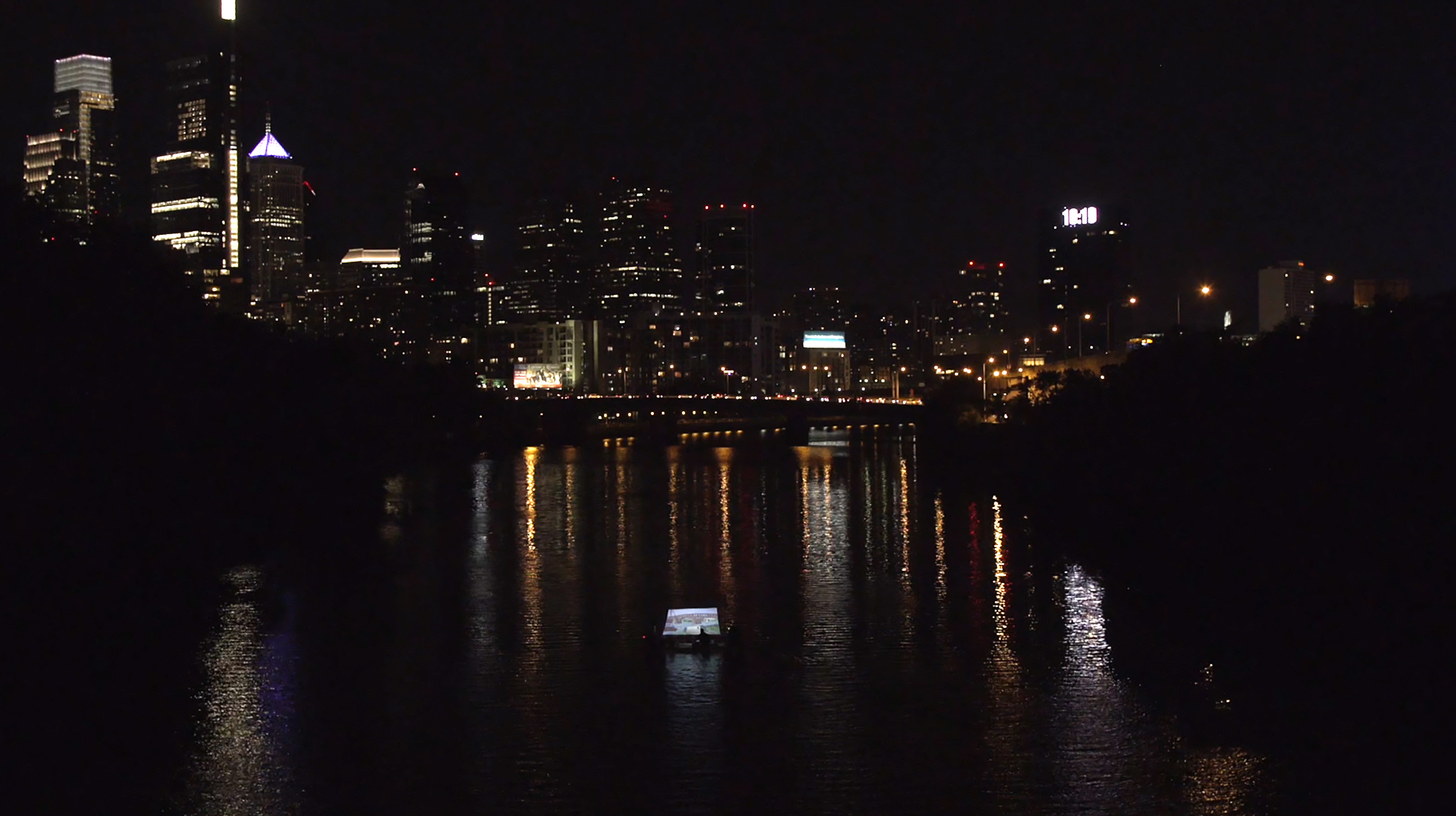
Over time, the Schuylkill River has served many purposes, acting as hub for transportation, industry, and recreation. In a new public art installation, to be presented during three weekends this month, artist Jacob Rivkin will be juxtaposing that history with the river in its current state, projecting hand-drawn animations based on archival material on a floating screen that will traverse the river itself.
Rivkin, the 2018 Mellon Artist-in-Residence in the Penn Program in Environmental Humanities (PPEH), has spent the last year combing the digital archives and collections of a variety of institutions, identifying photographs, etchings, and drawings related to the Schuylkill. In “Floating Archives,” Rivkin, also a lecturer in the Fine Arts Department in Penn’s School of Design, will project his animations onto a screen suspended between two canoes and paddled up the river.
The work presented will coincide with twilight on three Saturday evenings: Sept. 8, 6:30-10 p.m.; Sept. 15, 6-9:30 p.m.; and Sept. 22, 5:30-9 p.m. (with rain dates of Sept. 9, 16, and 23). Viewers and passersby will be able to observe the installation from the river’s banks and bridges as it journeys from the public dock at Bartram’s Garden to the end of the tidal Schuylkill at the dam near the Fairmount Water Works.
“‘Floating Archives’ offers residents of Philadelphia the opportunity to consider the embedded histories in each landscape,” Rivkin says. “Every sidewalk, landmark, and natural feature contains a narrative that turns each location from a space to a place. As the floating platform moves up the Schuylkill River, animations based on archival material are shown in alignment with the locations they reference. The past and present meet for a doubling of both history and landscape.”
Rivkin took part as an instructor in PPEH’s On-Water Intensive Research Seminar this summer, helping lead participants in hands-on, interdisciplinary inquiries into the river’s past, present, and future. In one project, Rivkin offered guidance in creating floating monuments to the Schuylkill, crafted from litter found along its banks.
Bethany Wiggin, founding director of PPEH, says “Floating Archives” offers a “light touch on sometimes heavy historical materials.”
“For a few years now, PPEH has offered a range of public engagements that seek to interpret the tidal Schuylkill as an unwitting laboratory for centuries-long experiments that range from draining water and ‘reclaiming’ land to energy transitions,” she says. “But these long and ongoing attempts to shape the relations between land and water can be very hard to present in succinct images. Rivkin’s work does just this—without a preachy, didactic tone.”
Additional information is available at the Floating Archives website.
Video by Aidan Un






